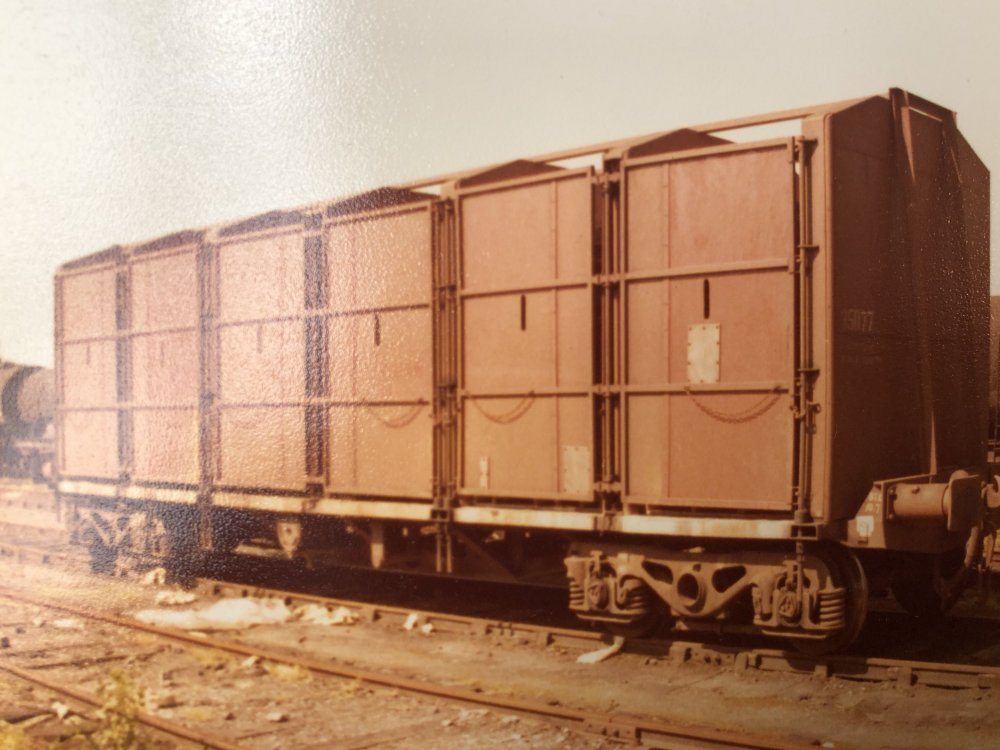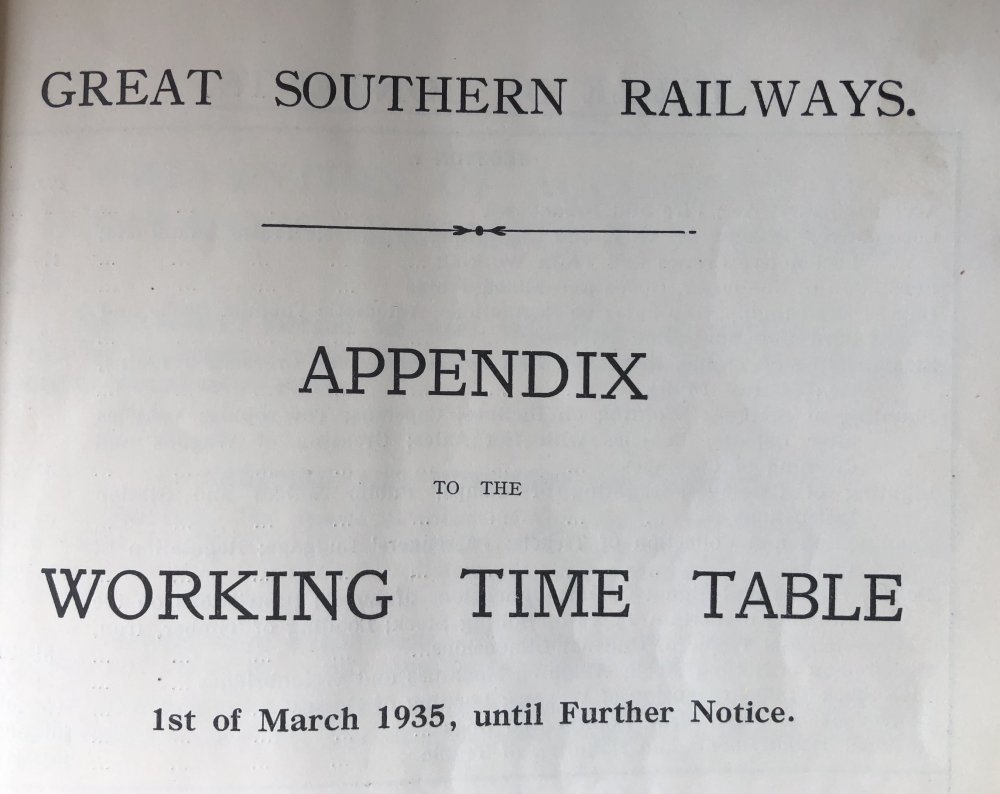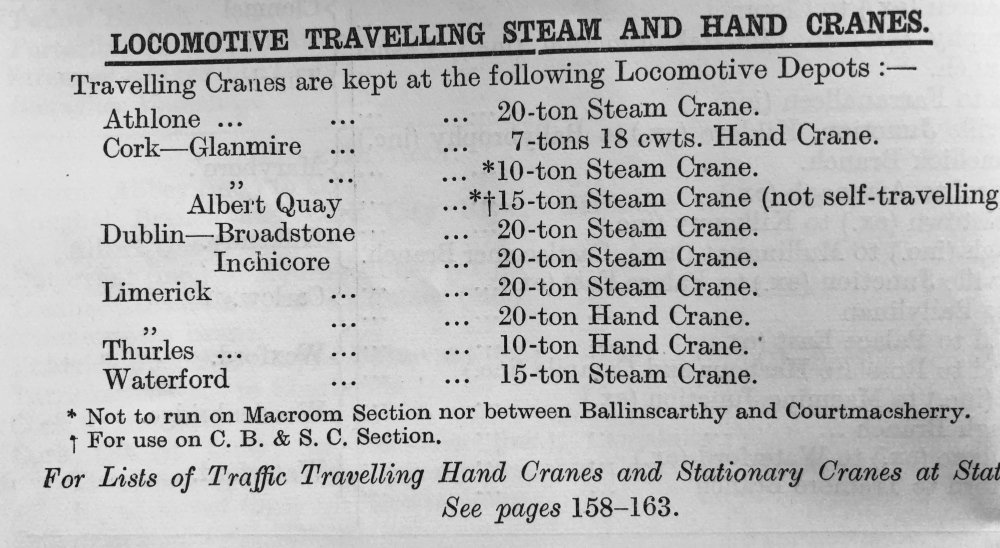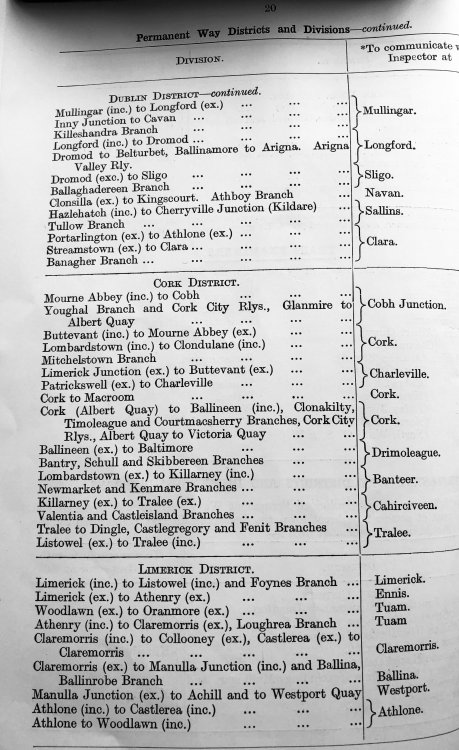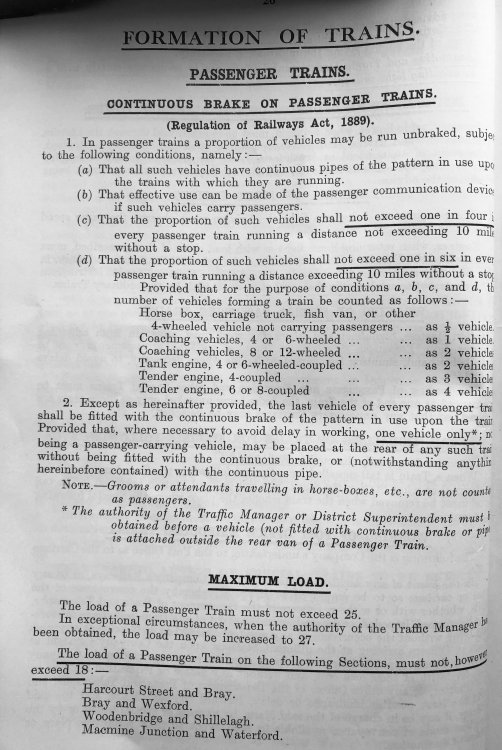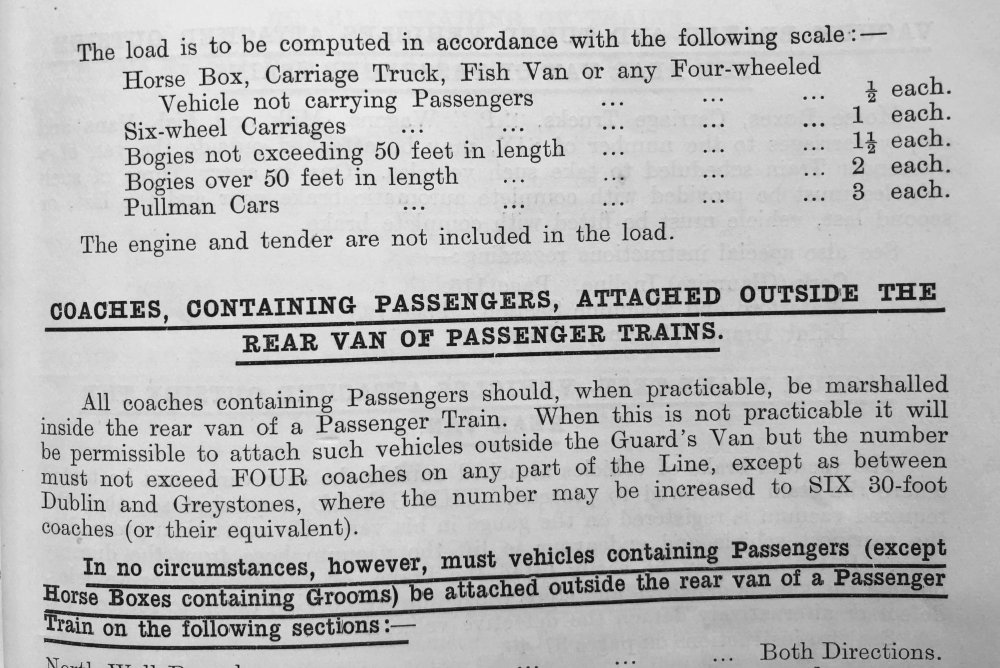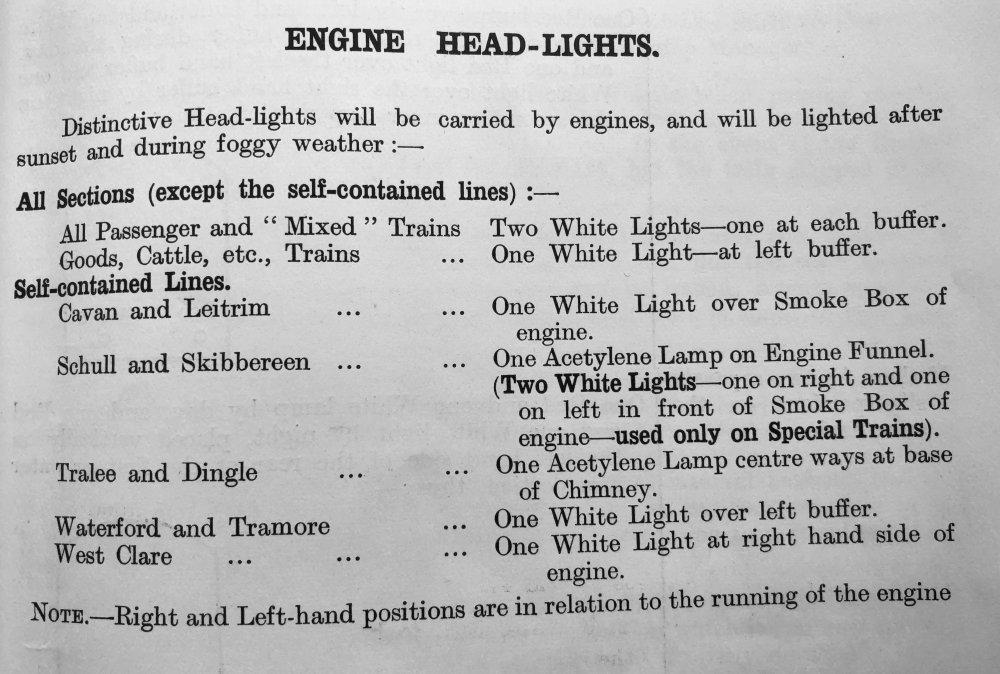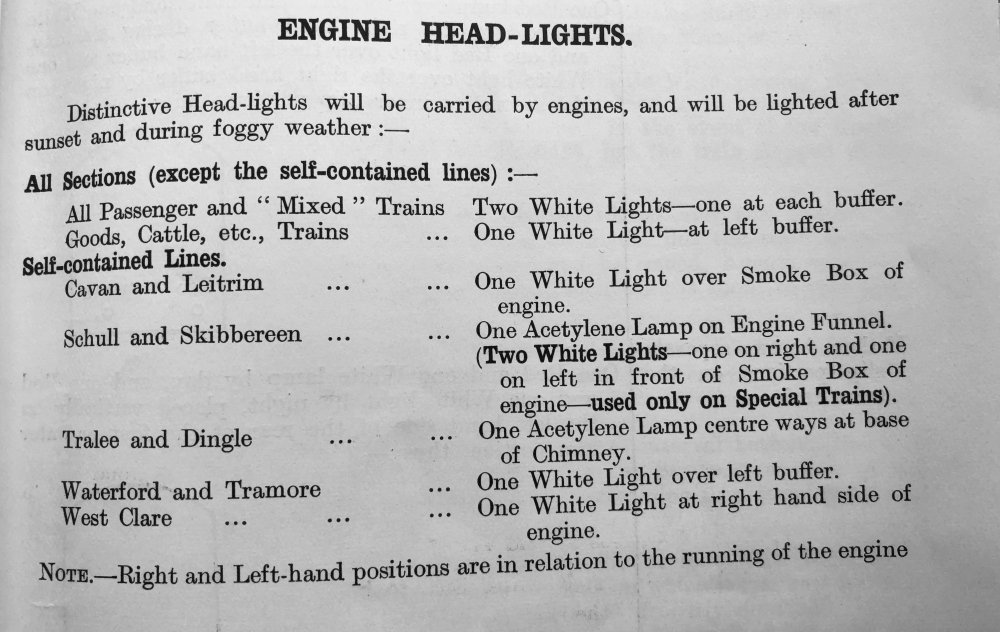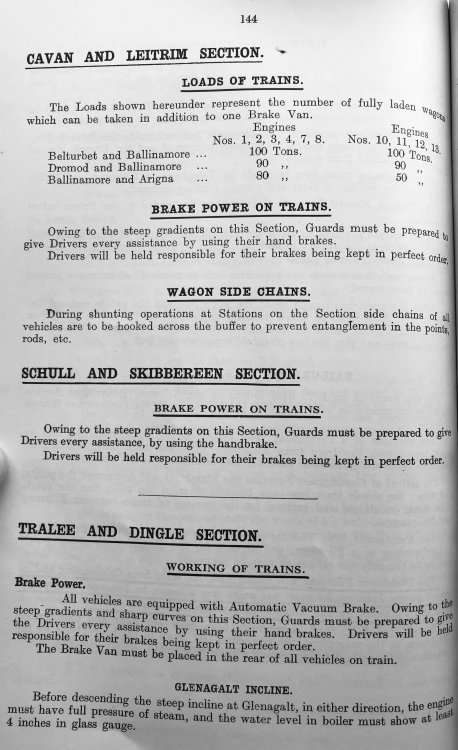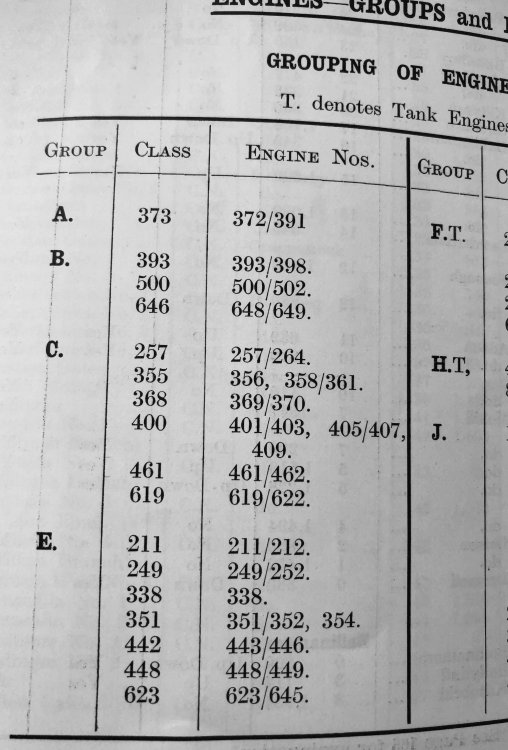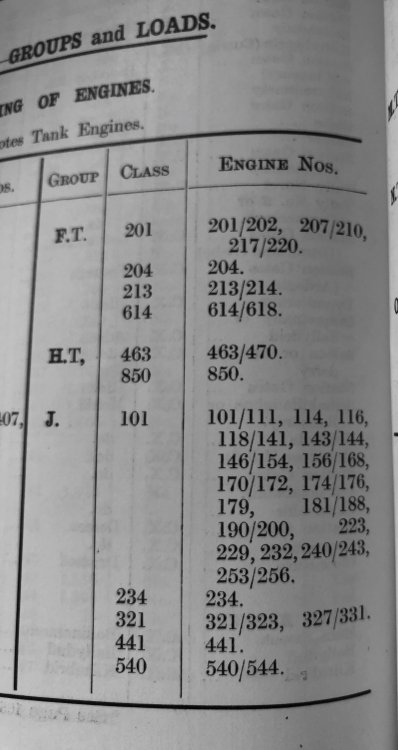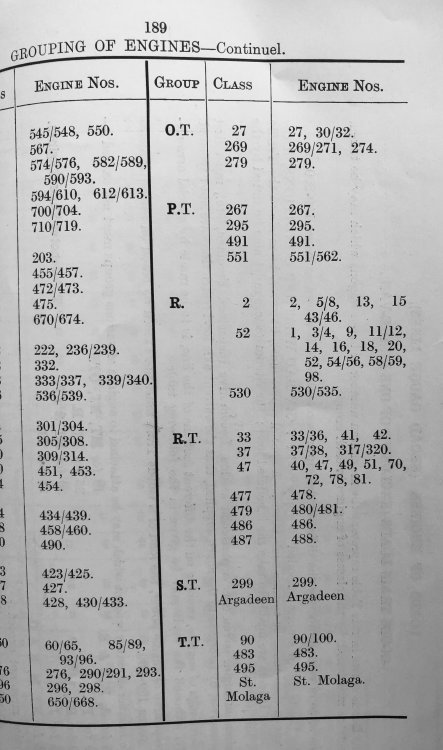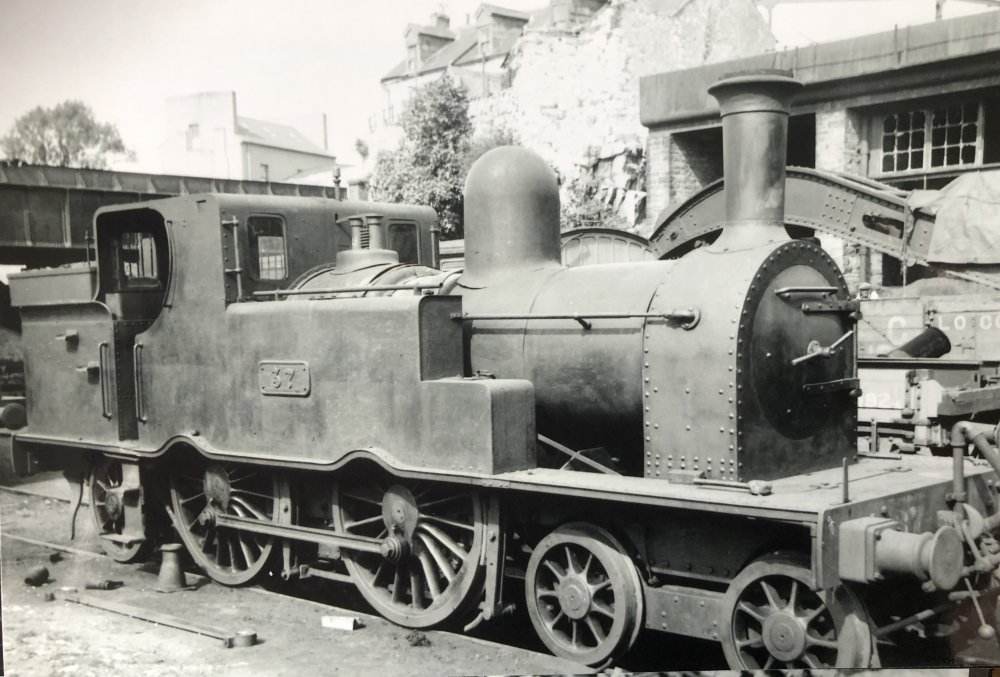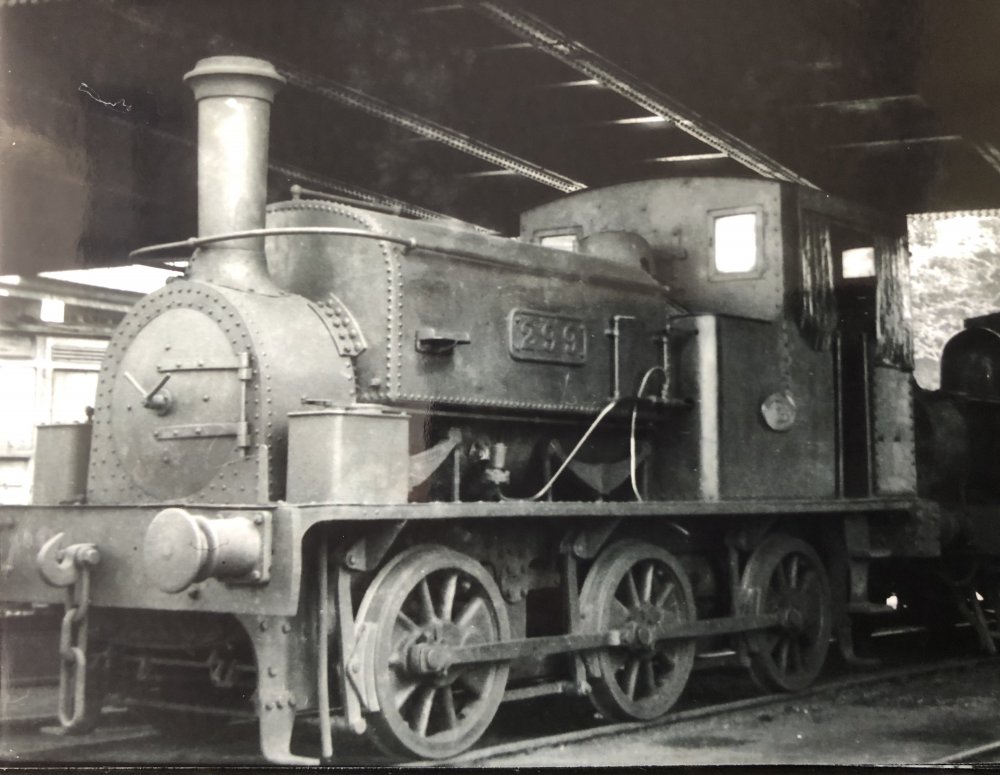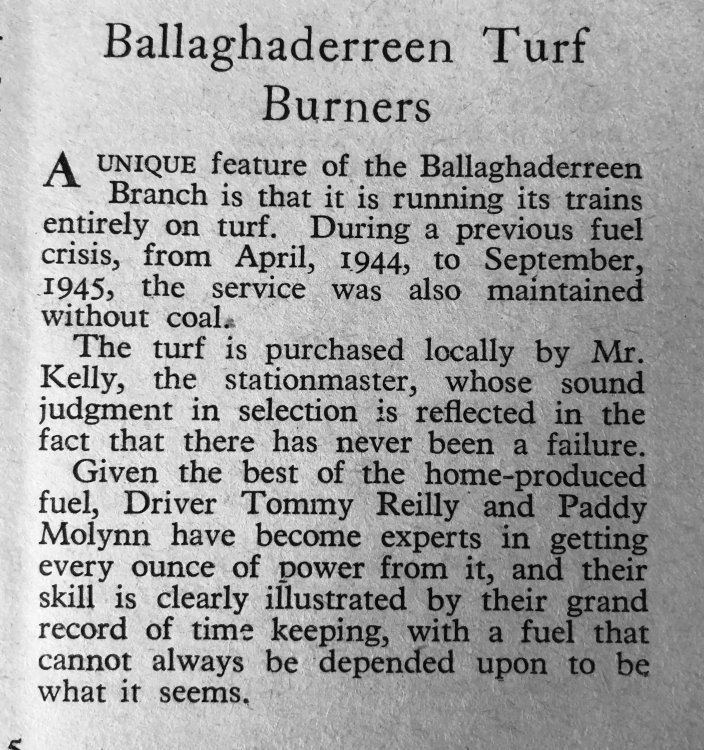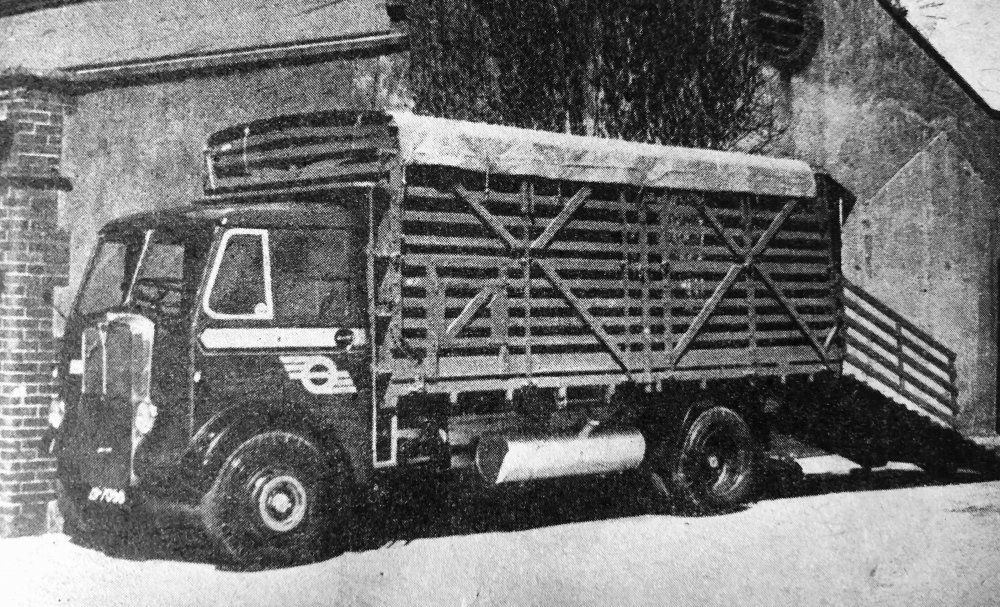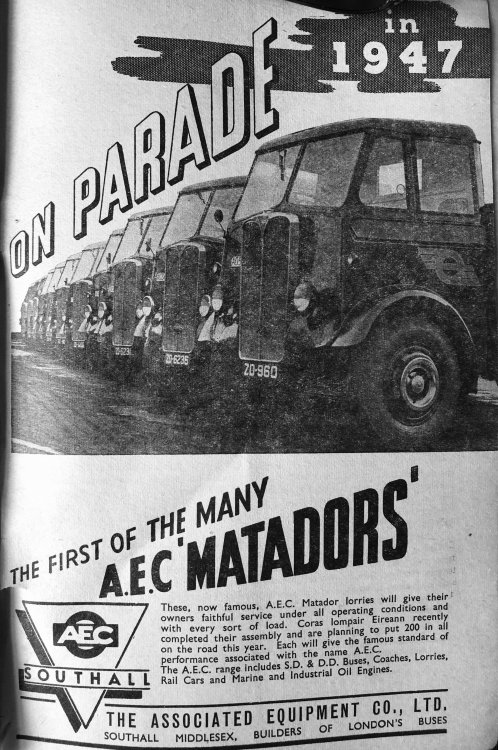-
Posts
15,831 -
Joined
-
Last visited
-
Days Won
393
Content Type
Profiles
Forums
Events
Gallery
Blogs
Store
Community Map
Everything posted by jhb171achill
-
I have to say, the modern NIR railcars are very comfortable indeed, and certainly rival in terms of comfort the AEC cars, which I would say are the most comfortable railcars ever to run in Ireland. And the NIR ones are WAAY quieter - AECs were noisy when accelerating....
-
35077 is the only thing I can make out - wagon number....
-
I posted some random pages out of the 1935 GSR "Appendix" earlier....within these hallowed pages it is "Rocksavage" - yes, the railwaymen DID call it that. I do too, when I must; it just sounds odd!
-
Found this from 1985...... Can’t remember where it was! Few markings.... even in CIE days, with endless door-swopping, some ended up with no logo. After 1987, when IE took over, normal goods stock including these lost their “broken wheel” logos by degrees. IE never applied either the “set of points” nor the “three pin plug” logos to any normal goods stock, so these yokes ended their days with no logos.
-
It's a generational thing, MM. Many will see anything in the steam era as uninteresting, others are interested in operational realism, but not scenery. Others again see the scenery as being - if anything - more important than what runs through it. Some seek absolute rivet-counting strct historical accuracy, others want as many trains running at any one time as possible. It's a bit like N gauge versus 00 or 0 - while space constraints are usually the key to deciding this, some have preferences for any of the three. There will come a day when 201s and ICRs are keenly sought after as models, even long after they are withdrawn. I remember seeing an article somewhere, years ago, about how there's some sort of psychological connection with many people to an era that their parents would have known better than they did - hence my father's interest in things 1900-1925 (he was born in 1918) and mine in things fifties; but my very earliest railway recollections are about 1960. The point is, nobody is right or wrong here. It's just opinion. Personally, as you'll have gathered, history is my thing, but I have every respect for other who prefer the modern scene - and as you've seen here, there are many very outstanding layouts to be seen from the 1980-to-date period.
-
BREAKING NEWS! Enterprise Express held up at Portadown Jct
jhb171achill replied to leslie10646's topic in News
Not every grey tender ended up with a “snail”, MM - some didn’t have anything, including the last two engines ever painted grey as late as 1962. Most did, though. -
For those like me who have descended into the parallel reality of incurable nerdism, documents such as these provide a fascinating insight into how the railway actually functioned in the past. What follows is just a tiny sample of the sort of information contained therein.
-
Sometimes a withdrawal date and an actual scrapping date can be years apart - witness B114 and the line of B101s at Inchicore during the 1970s and 80s, and G601, which spent double the amount of time it was in traffic, withdrawn but sitting upended at the end of the scrap line in Inchicore! The SLNCR by 1957 had all sorts of tumbledown antiques stuffed in sidings at Manorhamilton.....
-
I had always thought for me personally, nothing after 1965 or so. But in all reality, some of the stuff on the market now is causing a major rethink. The ferts especially, but other stuff too.
-
And the LBSC was, of course, just narrow gauge......................................
-
Those look great! 1970s heaven...
-
They had inherited a large fleet in 1925, which was more than adequate for most of the largely rural traffic. With the growth of road traffic and the depression-era of the 1930s (which we are likely to be seeing again, nowadays!), money for large scale replacement wasn't there - it had to be "make do and mend"!
-
Here's a loco kit which, while not of Hunslet parentage, could be adapted to make a good representation of 299. http://www.modelrailways.tv/
-
MORE LOCOMOTIVES FROM WEST CORK These were also taken in the late 1930s, again at “Rocksavage”. 495 had started life as a private-owner industrial, too, at Allman’s Distillery in Bandon. Despite coming into GSR stock, she remained in her maker’s “shop shelf” lined dark green until scrapping, a highly unusual exception to the universal grey. The GSR numberplate is non-standard in pattern. I suspect it was locally cast. I doubt if it ever left Cork - a visit, ever, to Inchicore or Limerick would have seen it sheep-dipped in grey paint, for sure. GSWR No. 37 was a regular in West Cork for a number of years, as were several others of the class. They acquitted themselves very well on the main line to Skibbereen, as well as elsewhere. A steam-era layout in West Cork would need one of these and a Bandon tank in the same way that a 1970s layout would need at least one 141 and “A”.
-
I'm unaware of that, Garfield, but pictures of all three when working can be seen in "Rails Through North Kerry", page3 112-4. On P112, one is in steam. I am unsure of whether the other two were still in working order at that time. On a related note, several Belfast Dock steam cranes survive. There were, I think, three in Kelly's Coal Yard, where the GNR, NCC and BCDR used to get their coal from. At least two survive, and an inspection of them found at least one to be in reasonably mechanical order about twenty years ago. Very much restorable....
-
OK, I've counted. I think it's "1"..... .......can't wait for the next one!!!! :-) :-) Hmmmm....cabin fever......
-
Wonder what happened the plates off it? Looking at Senior's picture and the 1957 one.... it seems to have had sheets of corrugated iron as shelter for crews earlier on, but by 1957 it has a single light steel sheet..... The winds in West Kerry out on Fenit Pier on a winter night would be vicious, indeed.
-
I had always wondered ( It’s a perfect beast for a shunting layout. I’d be extremely tempted myself if there’s a kit of something similar out there. Given it’s “industrial” origin, and the position of the wheels vis a vis the loading gauge dimensions, I often wondered if (like a number of Irish “industrials”), it was an off-the-shelf British engine re-gauged.
-
Brilliant, Ernie, there’s an explanation for that! Yes, I would suspect it could have been an “unofficial” name!
-
Albert Quay, c.1938. Senior was out and about gricing... No. 299 hides under the oddly-named “Rocksavage” loco “depot” bridge. There’s no place called “Rocksavage”, and I have often wondered where this name originated. Anyone know? This would appear to the only picture on this visit, which may have been one of the two times he went to Macroom. An engine like this would be ideal for Downpatrick today.
-
Cuisle na Tíre (“Ireland’s Transport Magazine”)
jhb171achill replied to jhb171achill's topic in General Chat
-
MD220 - superb info on that pic, thanks! All - the track plans on OS maps often omitted points and crossovers. I saw one, one time of Strabane which didn't show the Letterkenny line as being connected to the rest at all. The absence of a suitable crossover in the above doesn't mean it wasn't there - it had to be. But as others have already said, there were no turnout up against the buffers - just the four parallel track we all remember. By the way, the singling of much of the Midland was in 1928, but Sligo to near Collooney was double tracked until the SLNCR closed. Latterly I think it was Sligo - Ballysodare.
-
Road Vehicles of the 1950-60 Period
jhb171achill replied to Colin R's topic in Trucks, Vans and cars
CIE road vehicles as new in 1947 - Essential for model goods yards! Cabs CIE green with light green stripe & “snail” logo - body wagon grey. -
Yes, that's what I remember.... I don't remember any actual pilot loco there and I doubt if there had ever been, certainly since Midland days anyway if at all. I daresay that in steam days there might have been a loco to shunt the quays, but only a guess. In more recent times, it was the train loco. (The story causes me to recall my first ever trip by train to Sligo - in those days it was laminates, including a dining car. There was an oul guy in it who was a bit gargled, let's say, and any time the guard / ticket checker passed him, the two would get into a heated argument!) Wow!! That's exactly what it was a reference to - that would make an interesting display nowadays!
.png.c363cdf5c3fb7955cd92a55eb6dbbae0.png)


